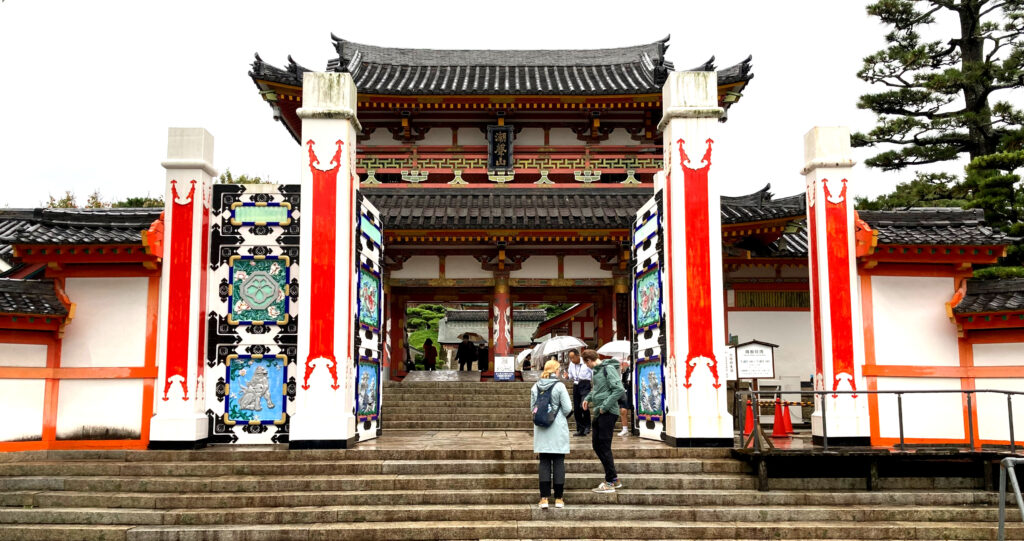
Explore Kosanji Temple on the Shimanami Kaido!
On Ikuchijima Island in Onomichi, Hiroshima, along the scenic Shimanami Kaido cycling route, you’ll find a truly unique and fascinating temple — Kosanji Temple.
Built in the early Showa period by businessman Kozo Kosanji to express his deep gratitude toward his mother, the temple is often called “The Temple Dedicated to Mothers.”
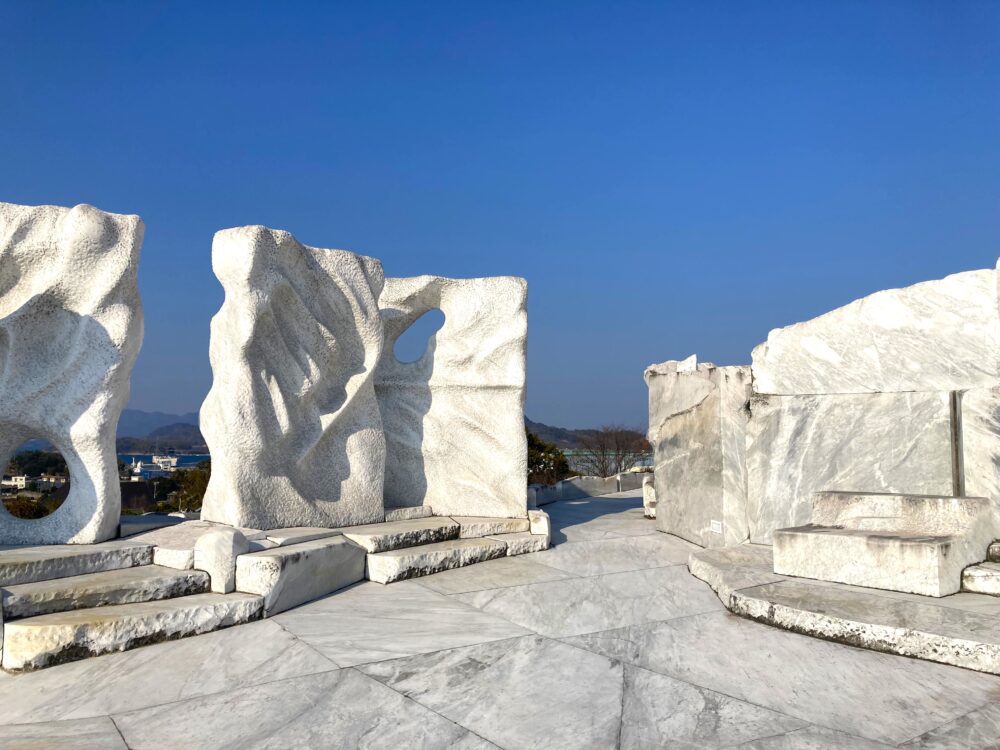
But this is no ordinary temple. Kosanji feels more like a theme park of Buddhism and art, filled with dazzling architecture, intricate sculptures, and even a modern-art-inspired garden. Walking through the grounds feels like stepping into another world.
The main highlights include:
- The Hill of Hope, a stunning white marble garden symbolizing peace and the future.
- The Cave of a Thousand Buddhas (Senbutsu-do Jigokukyo), a mysterious underground passage about 350 meters long.
- The Kongo Museum, where you can admire art and precious Buddhist artifacts.
Whether you’re an art lover, a fan of Buddhist statues, or just exploring the Shimanami Kaido, Kosanji Temple offers a truly unforgettable experience.
It’s one of the must-visit art spots on your journey across the islands!
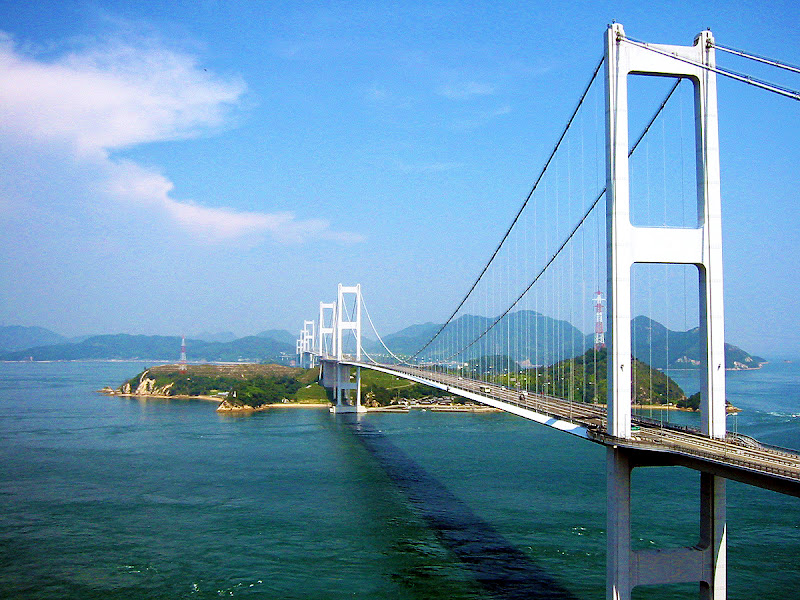
img: Hiroaki Kaneko
From Hell to Paradise: The Cave of a Thousand Buddhas
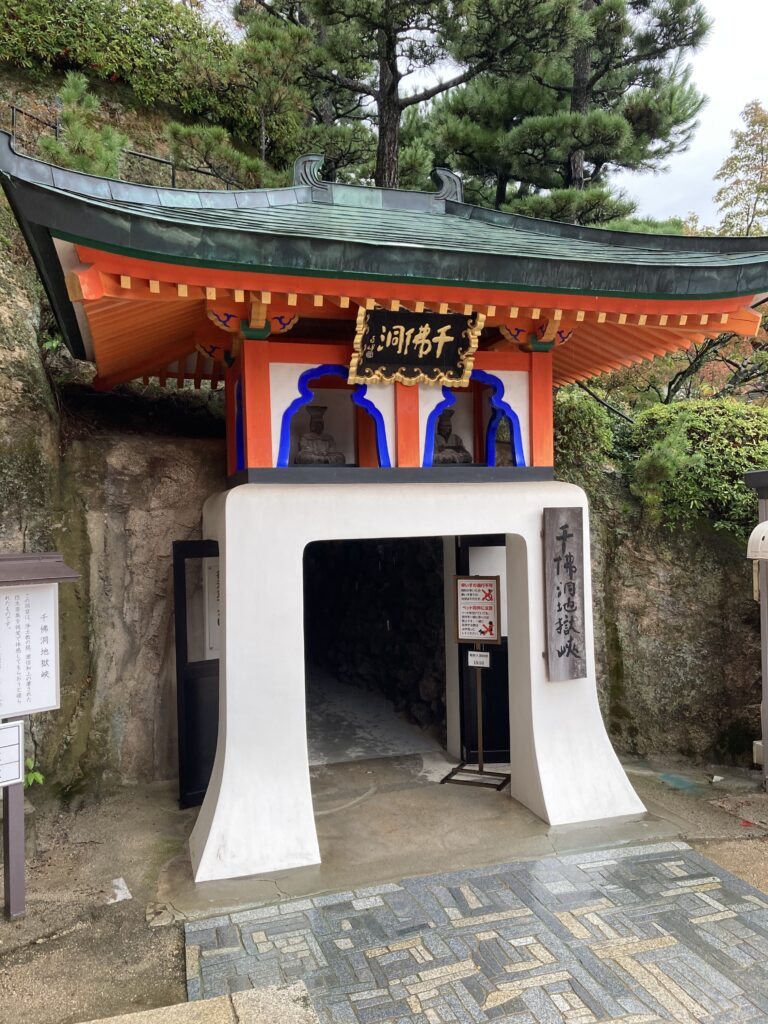
Experience the Underground World of “Senbutsu-do Jigokukyo”
One of the most fascinating attractions at Kosanji Temple is the Cave of a Thousand Buddhas (Senbutsu-do Jigokukyo) — a 350-meter-long underground passage that takes visitors on a symbolic journey from hell to paradise.
As you step inside, the path gradually slopes downward. The air becomes cool and quiet, and eerie statues and wall paintings suddenly appear before you, vividly depicting scenes of suffering in Buddhist hell. It’s both thrilling and a little spine-chilling.
But once you pass through this dark realm, you’ll emerge into a breathtaking world of light — a vision of the Pure Land (Paradise). In the large illuminated chamber, hundreds upon hundreds of Buddha statues stand in silence, creating a sacred and awe-inspiring atmosphere. It’s said that there are nearly a thousand Buddhas here, living up to the name “Cave of a Thousand Buddhas.”
Walking through this underground space feels like traveling between the present world and the afterlife — a mysterious, unforgettable experience unique to Kosanji Temple.
The Teachings Behind the Cave
The design of Senbutsu-do Jigokukyo is not just for visual impact — it’s deeply inspired by Buddhist philosophy. The cave was created to represent the teachings found in “Ojo Yoshu,” a famous Buddhist text written by the Heian-period monk Genshin (942–1017).
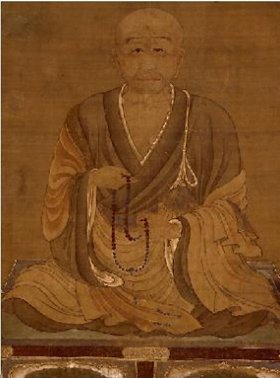
In this work, Genshin described the contrast between the horrors of hell and the beauty of paradise, explaining how one could be reborn into the Pure Land through the recitation of the Buddha’s name (nenbutsu). His ideas helped shape Japan’s concept of “Heaven and Hell” and deeply influenced later Buddhist art and literature.
During Genshin’s time, Japan was facing wars and natural disasters, and people believed the world was entering its final age — a period known as Mappo, when Buddhist teachings were thought to decline. Seeking salvation, many turned to faith and prayer, finding comfort in Genshin’s accessible and compassionate teachings.
Today, the Cave of a Thousand Buddhas at Kosanji Temple brings Genshin’s vision to life. It’s like a modern, immersive version of Ojo Yoshu — a profound journey through darkness and light that leaves a lasting impression on all who walk its path.
The Hill of Hope: A White Marble Dreamscape
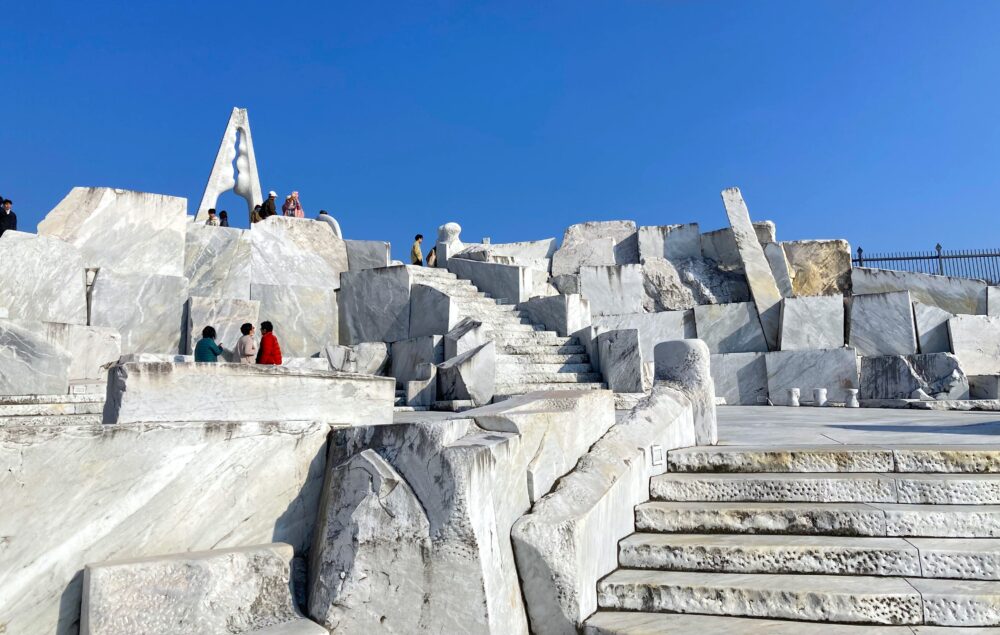
Inside the grounds of Kosanji Temple lies one of its most breathtaking sights — the Hill of Hope (Miraishin no Oka).
Spread across an impressive 5,000 square meters, this stunning garden is made entirely of pure white marble, creating a dreamlike, otherworldly atmosphere.
The artist behind it is Itto Kuetani, a world-renowned sculptor based in Italy.
All the marble used here comes from Carrara, Italy, famous for supplying the same high-quality stone used in Greek temples and Michelangelo’s masterpieces.
As you wander through the hill, you’ll encounter several of Kuetani’s expressive monuments. The dazzling white stones, bathed in sunlight, make you feel as if you’ve stepped into a Mediterranean resort rather than a temple garden.
Among all of Kosanji’s attractions, the Hill of Hope is especially popular — a perfect fusion of art, architecture, and nature.
It’s a peaceful place where you can slow down, breathe deeply, and let the beauty of art and serenity refresh your soul.
The Magnificent “Koyo-mon Gate” and the Main Hall
Koyo-mon Gate
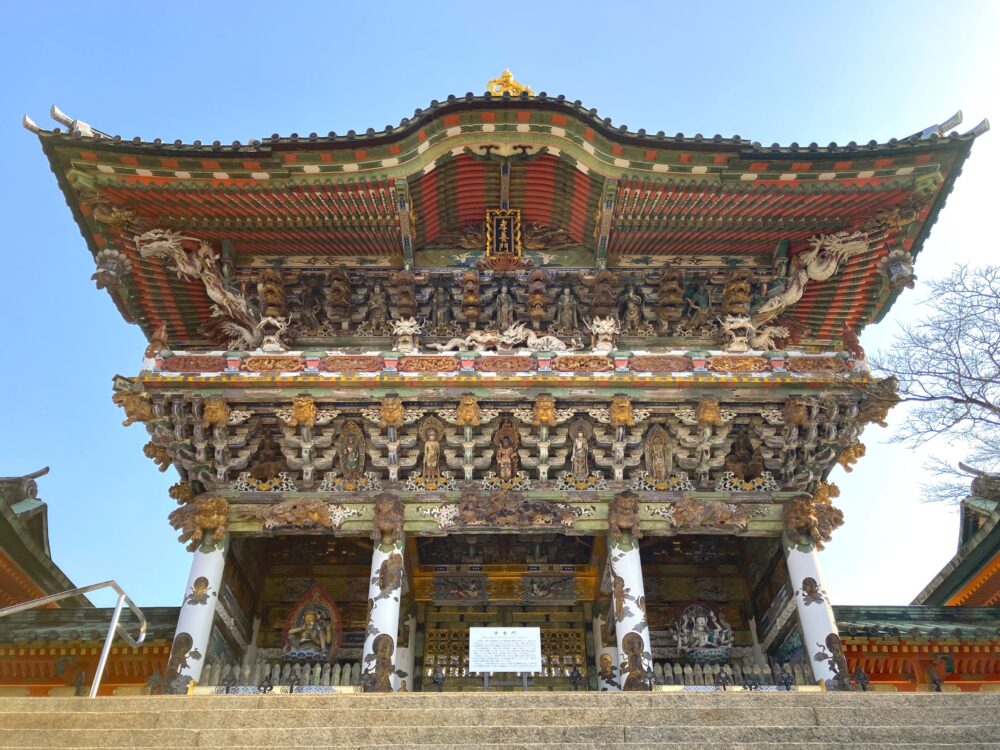
As you enter Kosanji Temple, your eyes are immediately drawn to the dazzling Koyo-mon Gate.
The name “Koyo” (filial devotion) reflects founder Kozo Kosanji’s heartfelt dedication to his mother — the very reason the temple was built.
This ornate gate was modeled after Yomeimon Gate at Nikko Toshogu Shrine, one of Japan’s most famous architectural masterpieces.
Incredibly, Kosanji borrowed the official blueprints from Japan’s Ministry of Education at the time and spent nearly ten years recreating it.
Because of its grandeur, Kosanji Temple is sometimes called “Nikko of the West.”
Main Hall
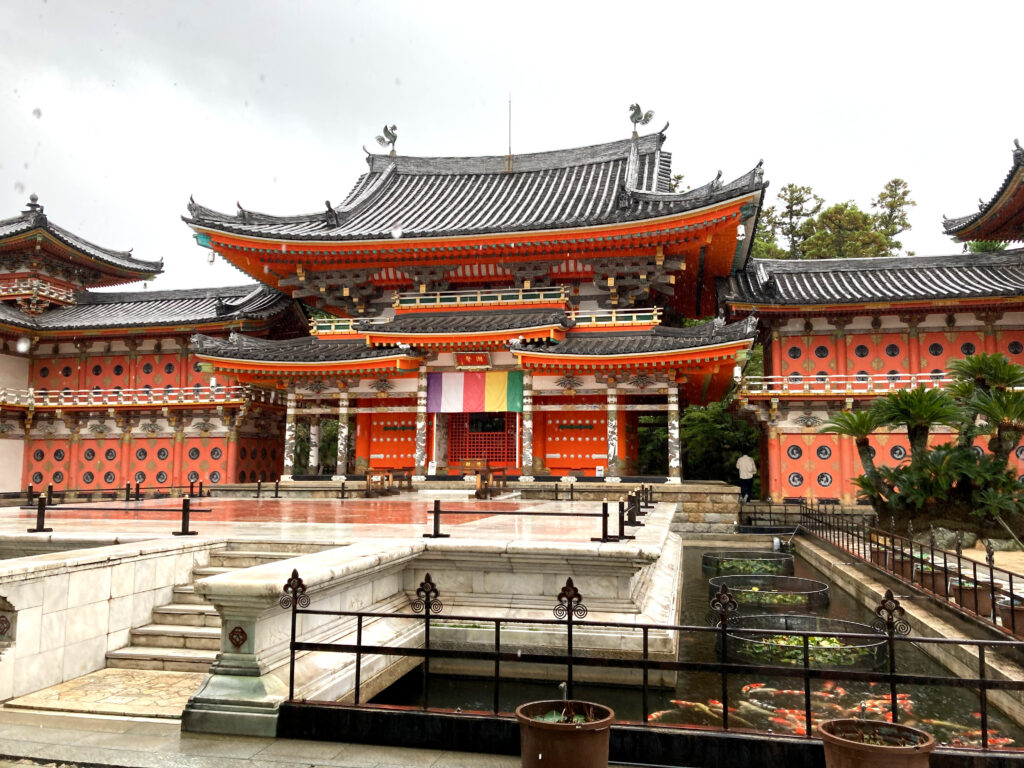
Passing through the Koyo-mon, you’ll find the temple’s Main Hall, inspired by Byodo-in Temple’s Phoenix Hall in Uji, Kyoto — a symbol of the Pure Land paradise.
The structure’s elegance evokes a sense of calm and spiritual beauty.
But the true highlights lie beyond its architecture.
On the west side stands a massive statue of Fukukenjaku Kannon, built after World War II — an awe-inspiring presence of compassion and strength.
On the east side, you’ll find a seated statue of Shakyamuni Buddha, originally from Kofuku-ji Temple in Nara and designated as an Important Cultural Property dating back to the Heian period.
At Kosanji Temple, you can appreciate both architectural splendor and spiritual history — an experience that perfectly captures Japan’s fusion of art and faith.
The Treasures of the Kongo Museum
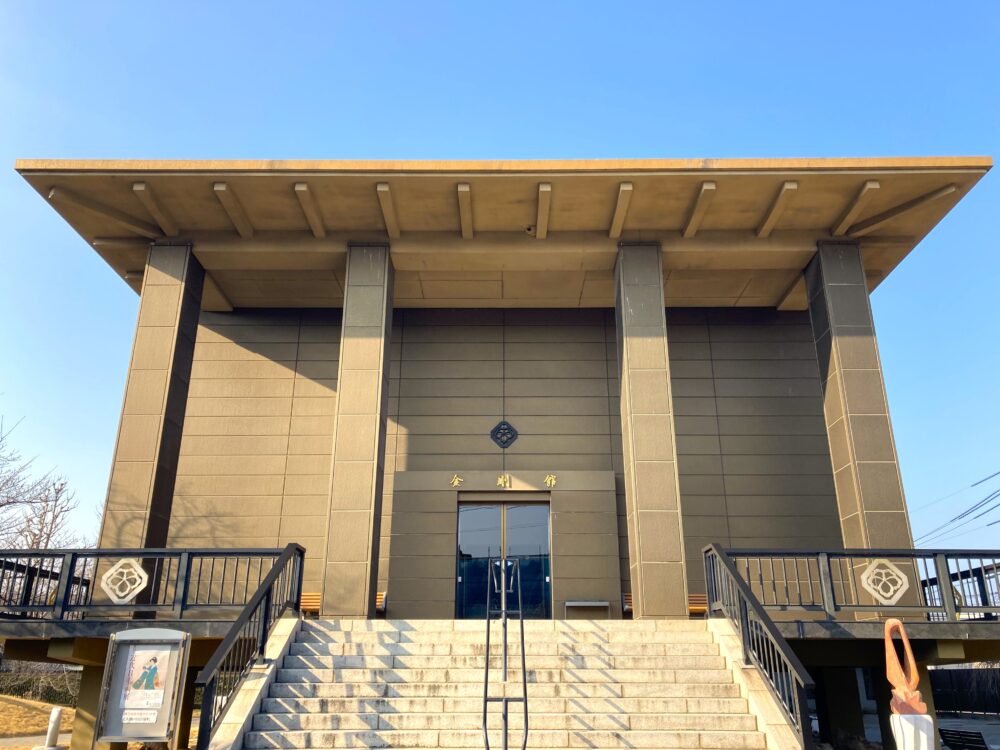
Located on the north side of Kosanji Temple, the Kongokan Museum feels like a small but elegant art gallery.
Here, visitors can admire carefully selected Buddhist statues and artworks from Kosanji’s vast collection.
Special exhibitions are occasionally held on the second floor, so there’s always something new to discover — even if you’ve visited before.
Let’s take a look at two of the museum’s most important highlights, both officially designated as Important Cultural Properties of Japan.
Standing Statue of Shakyamuni Buddha (10th century)
Important Cultural Property
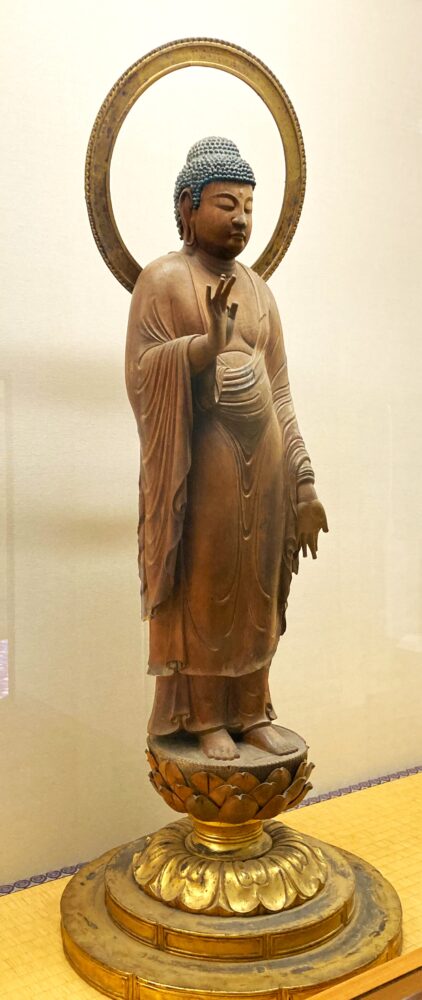
This wooden statue of Shakyamuni Buddha, originally from Jinguji Temple in Mie Prefecture, was carved from a single block of wood — a technique known as ipponzukuri.
Because it was made from one piece, the statue has a smooth, seamless form, typical of Heian-period Buddhist sculpture.
The Buddha’s gentle face and softly rounded body convey warmth and compassion.
His right hand forms the semui-in (gesture of reassurance), symbolizing protection from fear, while his left hand forms the yogan-in (gesture of granting wishes).
Together, these poses express both spiritual comfort and the promise of salvation.
Over time, the statue’s wooden surface has gained a deep, rich tone, enhancing its sacred and timeless beauty.
When illuminated from behind, the halo further accentuates the statue’s peaceful yet powerful presence.
Seated Amida Buddha with Jeweled Crown (1201)
Important Cultural Property — Attributed to the sculptor Kaikei
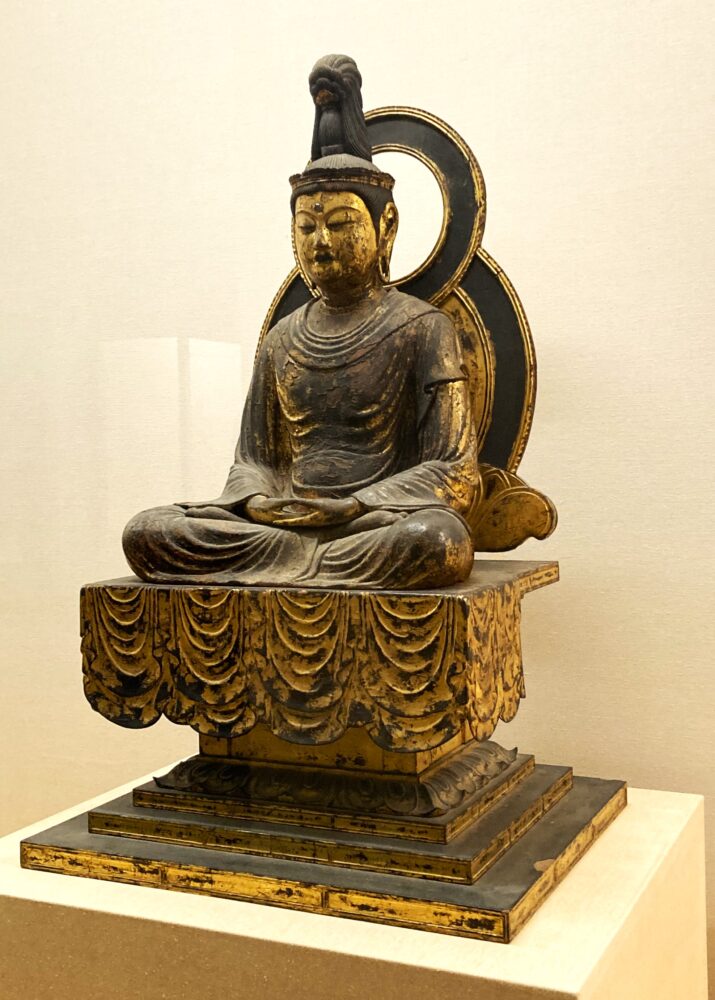
This Seated Amida Buddha with Jeweled Crown was originally housed in the Jogyodo Hall at Izu-san Temple in Shizuoka Prefecture.
An inscription on the back of the knees identifies it as a work by Kaikei, one of Japan’s most celebrated Buddhist sculptors of the Kamakura period.
The statue shows Amida Buddha sitting in meditation, hands forming the zenjo-in (gesture of deep contemplation).
Unlike typical Amida figures, this one wears a jeweled crown, reflecting the influence of Esoteric Buddhism and the unique style known as “Jeweled Crown Amida.”
Most of Kaikei’s surviving works are found in western Japan, making this piece — which originated in eastern Japan — a rare and valuable example of his early style.
Don’t Miss the Nearby Spots Around Kosanji Temple!
Hirayama Ikuo Museum of Art
Just a short walk from Kosanji Temple, the Hirayama Ikuo Museum of Art celebrates the life and work of one of Japan’s most beloved painters, Hirayama Ikuo, who was born here on Ikuchijima Island.
The museum features his magnificent paintings inspired by World Heritage sites and Buddhist art, as well as rare childhood sketches and student works that offer a full view of his artistic journey.
In this calm and quiet space, you can experience the peaceful spirit of Hirayama’s art, which often reflects themes of travel and prayer.
If you visit Kosanji Temple, this museum is definitely worth a stop.
Shimanami Kaido
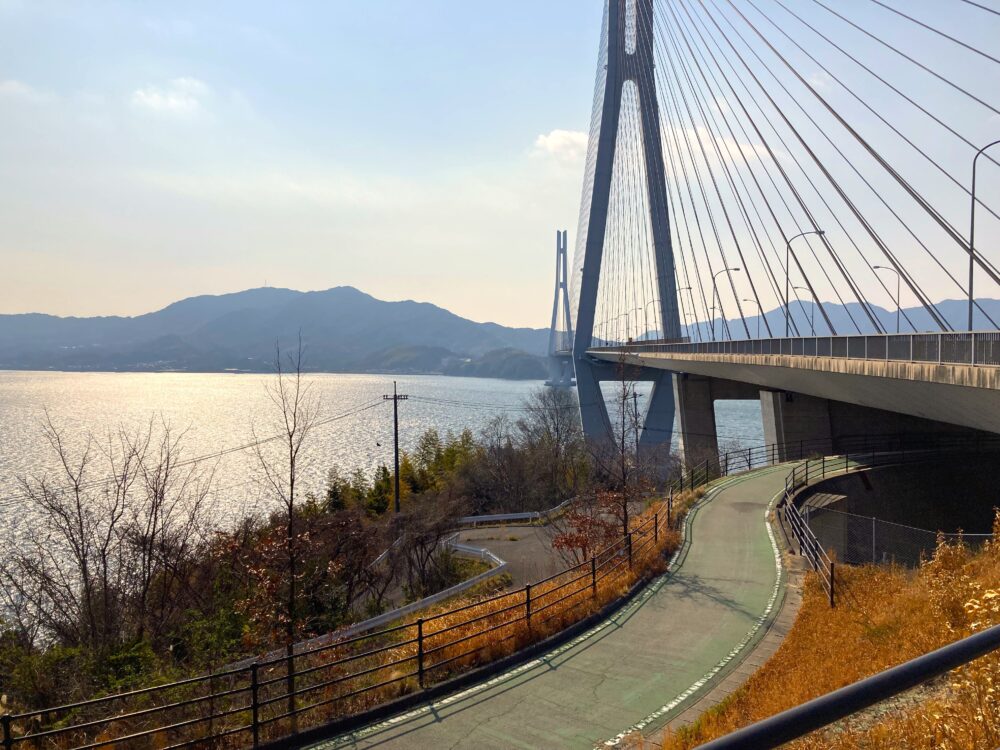
Ikuchijima Island is also a key stop along the Shimanami Kaido, a world-famous cycling route that connects Onomichi and Imabari across several islands of the Seto Inland Sea.
Known for its breathtaking ocean views and smooth paths, it’s a favorite among cyclists from Japan and around the world.
One highlight is the Tatara Bridge, which links Ikuchijima with Omishima Island. Its elegant arch design makes it a popular photo spot, and it’s also famous for the “Tatara Echo Dragon,” a unique echo effect you can hear when you clap your hands at the center of the bridge.
If you’re feeling adventurous, try reaching Kosanji Temple by bike!
You can stop by local restaurants, enjoy island views, and experience the perfect mix of art, nature, and freedom that makes cycling along the Shimanami Kaido so special.
Final Thoughts: A Healing Sanctuary Where Art Meets Buddhism
Kosanji Temple is far more than an ordinary temple.
Built from a son’s love for his mother, it combines spiritual devotion, stunning art, and architectural beauty in one unforgettable place.
Visitors can explore the thrilling underground world of Senbutsu-do Jigokukyo (The Cave of a Thousand Buddhas),
walk through the shining marble landscape of The Hill of Hope,
and admire elegant Buddhist sculptures at the Kongo Museum.
Together, these experiences create a unique “living museum” where faith and creativity coexist in harmony.
After exploring Kosanji’s grand gates and temple halls,
you can continue your journey to nearby attractions like the Hirayama Ikuo Museum of Art or the scenic Shimanami Kaido cycling route.
The island of Ikuchijima offers the perfect balance of culture, nature, and relaxation —
a place where both your mind and body will find peace.
If you’re looking to step away from everyday life and reconnect with yourself,
Kosanji Temple on Ikuchijima is the ideal destination — a quiet place that gently guides your heart toward calm and reflection.
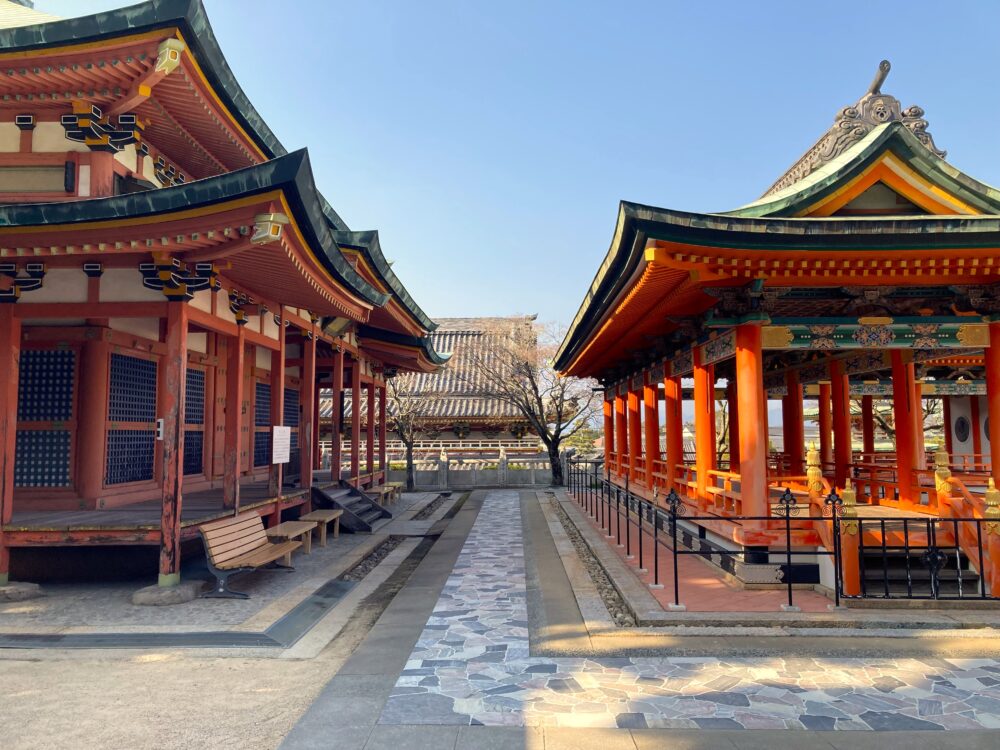
Kosanji Temple – Visitor Information
Location: 553-2 Setoda-cho, Setoda, Onomichi, Hiroshima Prefecture
















Comments